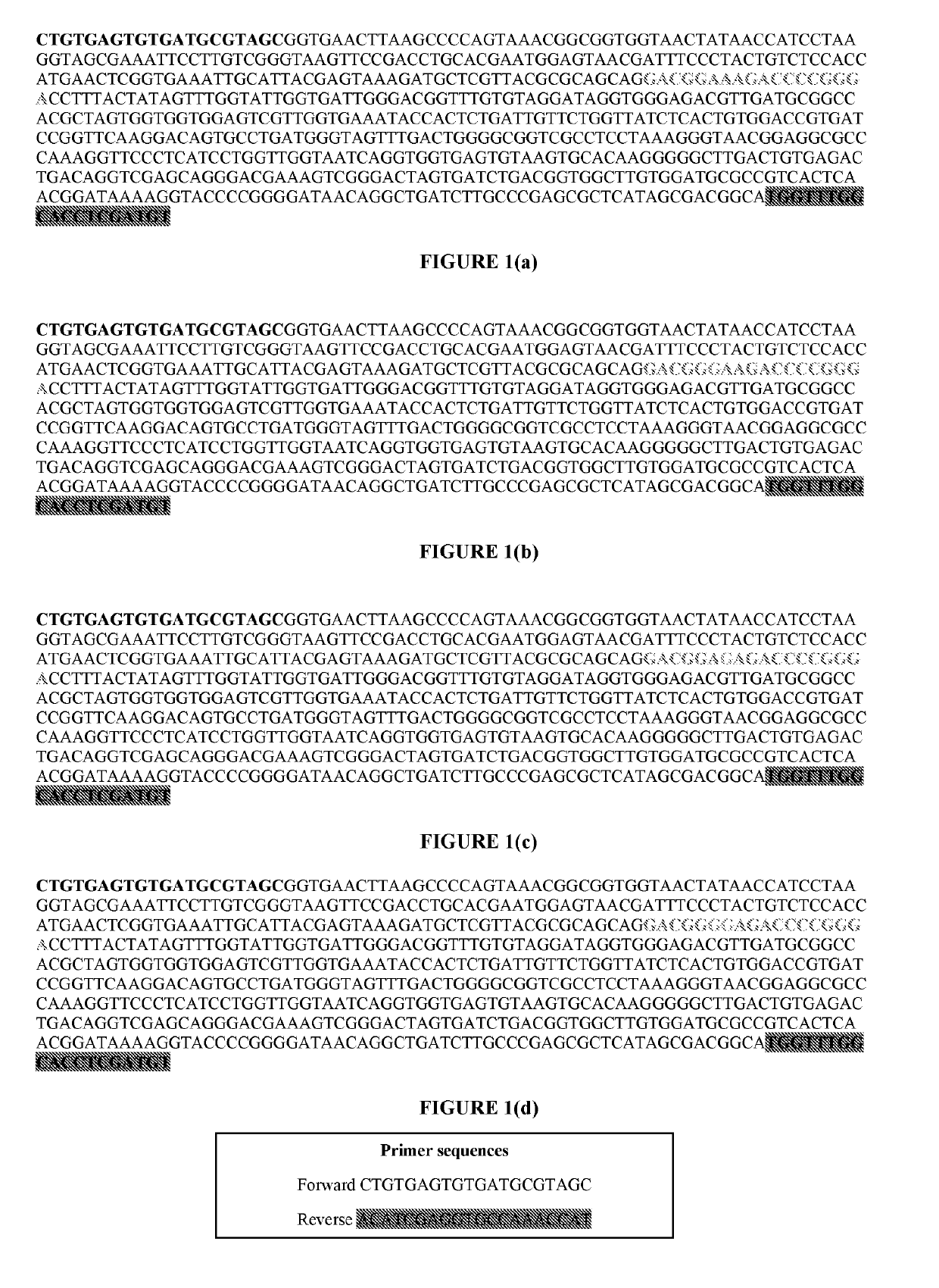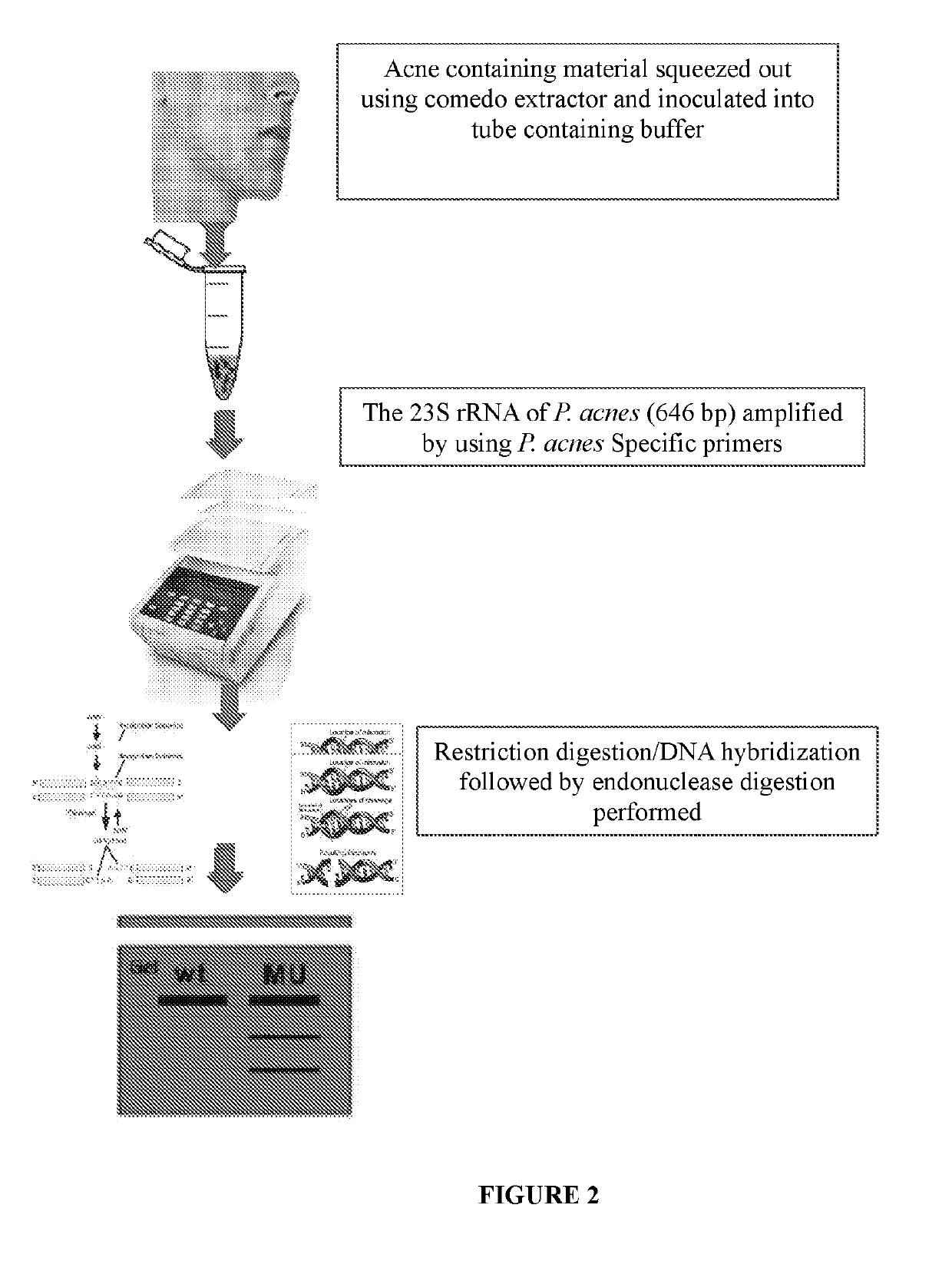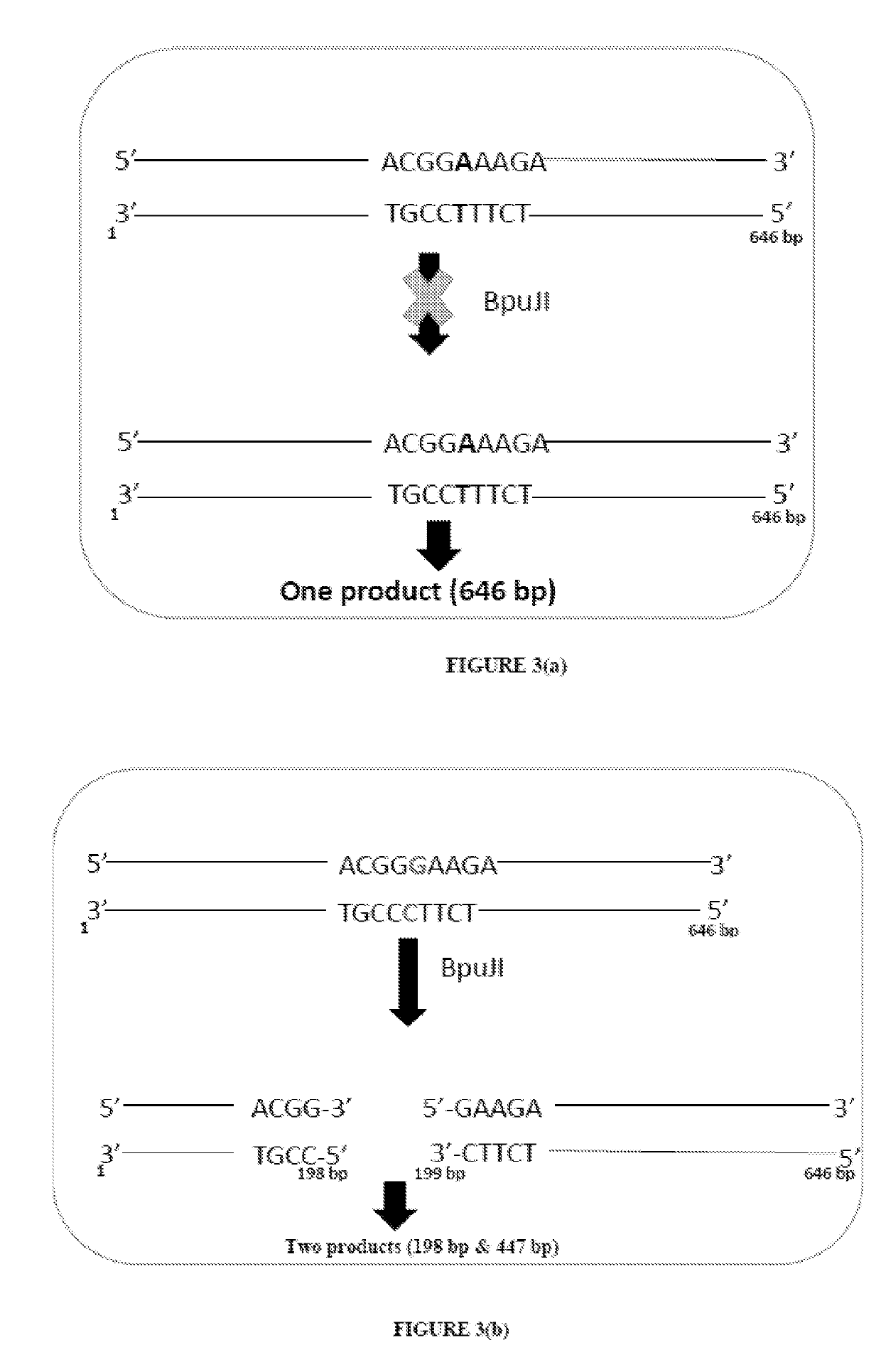Method of detecting and treating p. acnes and kit thereof
a technology of p. acnes and kit, applied in the field of detecting p. acnes, can solve the problems of over-use of antibiotics, poor clinical outcomes, and failure of current antibiotic treatment, and achieve the effect of reducing the bacterial coun
- Summary
- Abstract
- Description
- Claims
- Application Information
AI Technical Summary
Benefits of technology
Problems solved by technology
Method used
Image
Examples
example 1
Designing Specific Primers for Amplifying a Region of 23S rRNA Sequence that is Specific for P. acnes and Determining the Specificity of the Primers
[0126]Primers (Forward 5′-CTGTGAGTGTGATGCGTAGC-3′ and Reverse 5′-ACATCGAGGTGCCAAACCAT-3′) are designed to specifically amplify a region of 23S rRNA genomic sequence that is specific for P. acnes. The primers thus designed are used for PCR amplification of the DNA encoding for the 23S tRNA sequence of the following P. acnes strains: MTCC 1951 and MTCC 3297 (standard wild type strains), CCARM 9010 and V21B2 (clindamycin resistant strains), and V21A6 and V21A7 (containing A2059G mutation). The PCR reaction is setup for initial denaturation at about 94° C. for about 10 minutes followed by 30 cycles of denaturation at temperature of about 94° C. for about 45 seconds, annealing at temperature of about 50° C. for about 1 minute, elongation at temperature of about 72° C. for about 1 minute and by final elongation at temperature of about 72° C. f...
example 2
Detection of A2058G Mutation in P. acnes 23S rRNA Sequences using BpuJI Restriction Endonuclease
[0129]Restriction enzymes / restriction endonucleases can recognize and cleave DNA in specific nucleotide sequences. To detect the 2058 mutation in P. acnes 23S rRNA sequence, suitable restriction enzymes are screened using NEB cutter website. By using this tool four restriction enzymes (BpuJI, PsuGI, Sth1321, AspBHI) are shortlisted based on their affinity to recognize the A2058G mutation. However, apart from BpuJI, other enzymes show multiple cleavable sites in 23S rRNA sequences. BpuJI specifically recognizes the sequence 5′-CCCGT-3′ which falls within nucleotide A2058G (E. coli equal numbering) mutated sequences in P. acnes 23S rRNA sequence.
[0130]A 646 bp amplified sequence of DNA encoding 23S rRNA is obtained with respect to the wild type P. acnes strain using primers of SEQ ID Nos. 1 and 2, under the same conditions as provided in Example 1. This sequence and the 646 bp amplified seq...
example 3
Detection of A2058G and Other Point Mutations in Genomic DNA of Clindamycin Resistance Conferring 23S rRNA using DNA Hybridization
[0131]In a PCR tube, equal volume (about 10 μl) of the 23S rRNA PCR product of wild type P. acnes (MTCC 1951) and the 23S rRNA PCR product from a clindamycin resistant P. acnes (CCARM 9010) obtained in Example 1 is added and subjected to melting by heating the tube at about 95° C. for about 10 minutes. This is followed by reannealing of the strands by gradually decreasing the temperature in step down manner to about 25° C., The reannealed sample containing the heteroduplex DNA is digested with a mismatch specific DNA endonuclease (Surveyor®). The mismatch specific DNA endonuclease recognizes the base substitution mismatch site at the 2058 nucleotide of 646 bp PCR product and cleaves the DNA. Samples are stored at about −20° C. and whole samples (about 20 μl) are loaded in 2.0% agarose gels, wherein cleaving of the DNA is confirmed by an additional band at...
PUM
| Property | Measurement | Unit |
|---|---|---|
| temperature | aaaaa | aaaaa |
| temperature | aaaaa | aaaaa |
| temperature | aaaaa | aaaaa |
Abstract
Description
Claims
Application Information
 Login to View More
Login to View More - R&D
- Intellectual Property
- Life Sciences
- Materials
- Tech Scout
- Unparalleled Data Quality
- Higher Quality Content
- 60% Fewer Hallucinations
Browse by: Latest US Patents, China's latest patents, Technical Efficacy Thesaurus, Application Domain, Technology Topic, Popular Technical Reports.
© 2025 PatSnap. All rights reserved.Legal|Privacy policy|Modern Slavery Act Transparency Statement|Sitemap|About US| Contact US: help@patsnap.com



